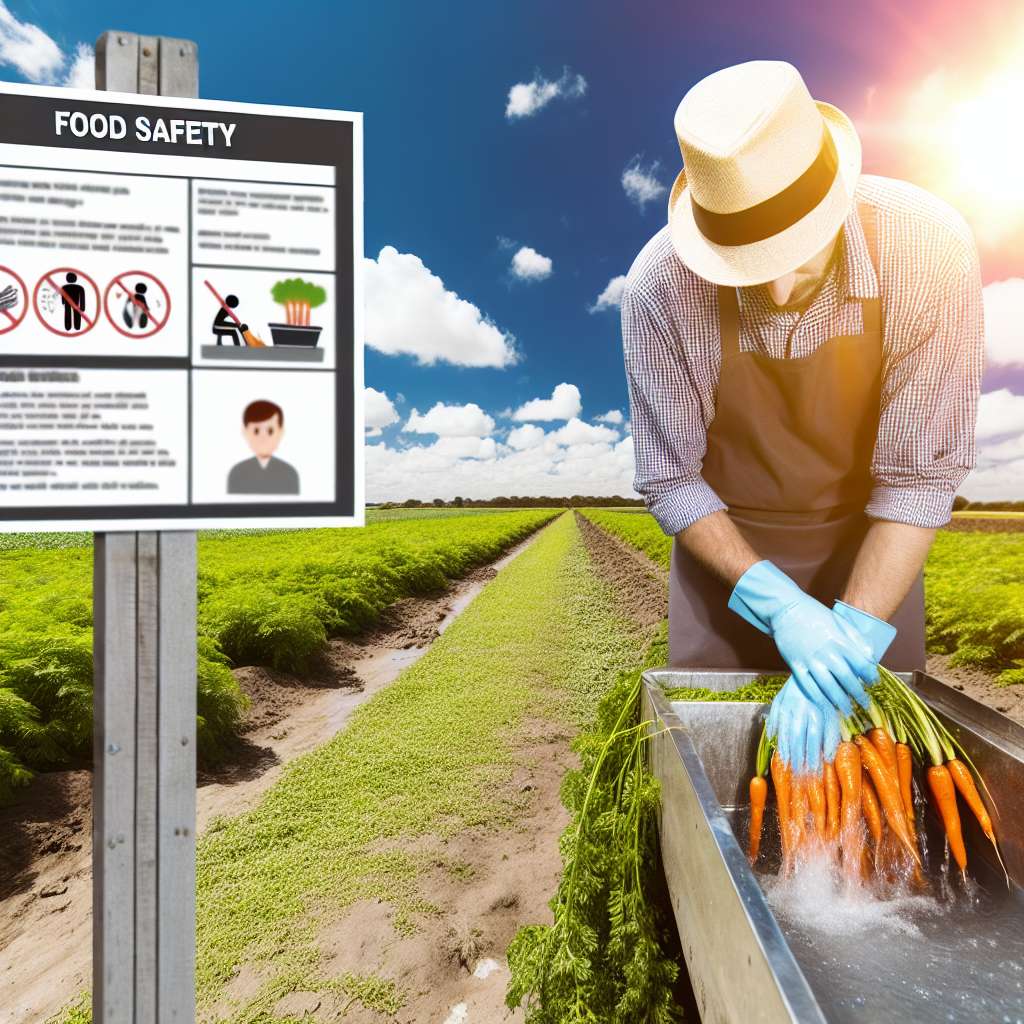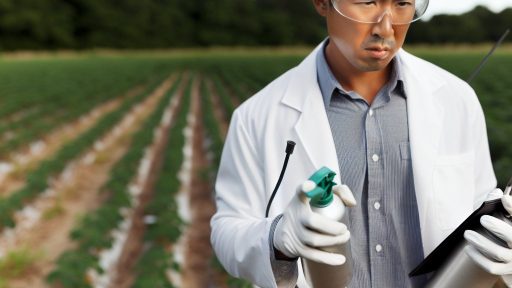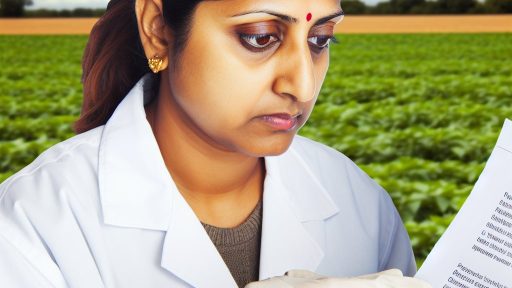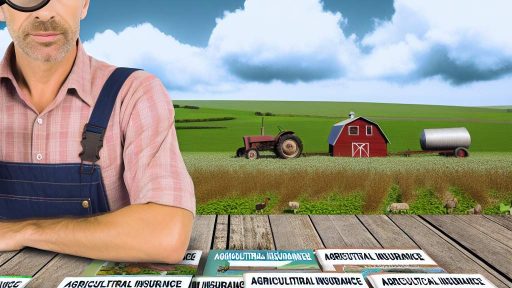Introduction to Food Safety Standards in Farming
Food safety standards are essential for ensuring the health of consumers.
These regulations help prevent contamination throughout the food supply chain.
Farmers must adhere to strict guidelines to meet these standards.
Proper practices mitigate risks associated with foodborne illnesses.
Compliance with food safety standards enhances consumer trust in agricultural products.
Importance of Food Safety Standards
Food safety standards protect public health across various markets.
These standards create uniformity in agricultural practices globally.
Moreover, they encourage better management within farming operations.
This not only safeguards consumers but also supports farmers’ livelihoods.
Investing in food safety increases the competitiveness of farming businesses.
Components of Food Safety Standards
Food safety standards often include guidelines for hygiene practices.
Safe handling and storage techniques are critical components as well.
Additionally, traceability of food products is vital in these regulations.
Farmers must implement effective pest and disease management strategies.
Temperature control is crucial during food processing and transportation.
Transform Your Agribusiness
Unlock your farm's potential with expert advice tailored to your needs. Get actionable steps that drive real results.
Get StartedImplementing Food Safety Practices
Training staff on food safety procedures is a necessary first step.
Regular audits help identify potential areas for improvement.
Farmers should utilize technology for monitoring and documenting compliance.
Establishing a strong food safety culture within a farming operation is essential.
Collaborating with local health departments can provide valuable resources.
Understanding Key Food Safety Regulations and Guidelines
Importance of Food Safety Standards
Food safety standards protect consumers from harmful substances.
These regulations ensure that food products are safe for consumption.
Adhering to these guidelines enhances public health and confidence.
Key Regulations You Need to Know
The Food Safety Modernization Act (FSMA) is pivotal legislation in the U.S.
FSMA emphasizes prevention over response in food safety practices.
This act mandates farms to implement proactive measures to prevent contamination.
Additionally, the Hazard Analysis Critical Control Point (HACCP) framework is essential.
This system identifies critical points in the food production process.
Guidelines for Compliance
Farmers must regularly train staff on food safety practices.
Effective training programs enhance awareness and compliance among workers.
Routine inspections of facilities ensure cleanliness and safety protocols are followed.
Moreover, maintaining proper records is crucial for traceability.
Documentation helps verify that safety standards are consistently met.
FDA and USDA Regulations
The Food and Drug Administration (FDA) oversees most food safety regulations.
Conversely, the U.S. Department of Agriculture (USDA) governs meat and poultry safety.
Understanding the roles of these agencies is vital for compliance.
Both organizations provide resources to help farmers implement safety measures.
Implementing Best Practices
Using clean water for irrigation and cleaning is a fundamental practice.
Farmers should also utilize safe handling practices during harvesting.
Showcase Your Farming Business
Publish your professional farming services profile on our blog for a one-time fee of $200 and reach a dedicated audience of farmers and agribusiness owners.
Publish Your ProfileRegularly testing soil and water sources is advisable to identify contaminants.
Furthermore, working with local health departments can provide essential support.
Implementing a Comprehensive Food Safety Plan
Establishing Clear Goals
First, define specific food safety goals relevant to your farm operation.
Make these goals measurable and realistic to track progress effectively.
Use quantitative and qualitative metrics to assess outcomes.
Conducting Risk Assessments
Regularly perform risk assessments to identify potential hazards.
Analyze the likelihood and severity of each identified risk.
This will help prioritize actions for mitigating risks.
Developing Standard Operating Procedures
Create detailed standard operating procedures for all food safety practices.
Ensure these procedures cover every aspect of the farming process.
Include protocols for cleaning, harvesting, and storage methods.
Training Employees
Invest in training programs for all employees regarding food safety standards.
Provide regular updates on best practices and emerging risks.
Encourage open communication about food safety concerns among staff.
Implementing Monitoring Systems
Use monitoring systems to track compliance with food safety protocols.
Establish checklists and logs to document daily operations.
Regularly review these records to ensure adherence to safety standards.
Regular Audits and Reviews
Conduct regular internal audits to evaluate the effectiveness of the food safety plan.
Update the plan as needed based on audit findings and industry changes.
Incorporate feedback from employees to improve the overall process.
Engaging with Regulatory Authorities
Build relationships with local food safety regulatory authorities.
Stay informed about changes in regulations affecting your farming practices.
Actively participate in workshops and training offered by these agencies.
Documenting Procedures and Policies
Maintain thorough documentation of all food safety procedures and policies.
This documentation should be easily accessible for all employees.
Ensure it is kept current to reflect any changes in procedures.
Gain More Insights: Agricultural Insurance for Livestock Farmers Explained
Best Practices for Soil Management and Crop Safety
Maintaining Soil Health
Healthy soil is essential for productive farming.
Regular soil testing helps determine nutrient levels.
This testing provides insight into pH and organic matter.
Moreover, crop rotation improves soil fertility and breaks pest cycles.
Using cover crops can prevent soil erosion and enhance structure.
Additionally, organic amendments like compost enrich soil biodiversity.
Implementing Safe Fertilization Practices
Proper fertilization methods ensure crop safety and yield.
Always follow recommended application rates for fertilizers.
Timing is crucial when applying fertilizers for maximum efficiency.
Consider using slow-release fertilizers to minimize runoff.
Furthermore, integrating nutrient management plans can optimize crop uptake.
Water Management Strategies
Effective water management is vital for crop safety.
Implementing efficient irrigation systems conserves water resources.
Showcase Your Farming Business
Publish your professional farming services profile on our blog for a one-time fee of $200 and reach a dedicated audience of farmers and agribusiness owners.
Publish Your ProfileMonitor soil moisture to prevent overwatering and leaching nutrients.
Additionally, using rainwater harvesting systems reduces dependency on groundwater.
Crop health improves when you manage water supply precisely.
Pest and Disease Control
Preventative measures can minimize pest and disease threats.
Regular field scouting helps identify problems early.
Utilizing integrated pest management (IPM) reduces chemical dependency.
Furthermore, selecting disease-resistant crop varieties enhances resilience.
Utilizing biological control agents can also support pest management.
Post-Harvest Handling
Proper post-harvest techniques ensure food safety.
Immediately cool crops after harvest to prevent spoilage.
Maintain cleanliness in storage areas to minimize contamination risks.
Additionally, training staff in food safety practices is essential.
Lastly, establish traceability systems to monitor product safety efficiently.
Delve into the Subject: Rural Development Policies: Empowering Farmers and Communities
Proper Handling and Storage of Produce on the Farm
Best Practices for Harvesting
Farmers should always wear clean gloves during harvesting.
Tools used for harvesting must be sanitized regularly.
Avoid gathering produce from contaminated areas.
Inspect all produce for damage or spoilage before collection.
Transporting Produce Safely
Use clean containers for transporting harvested produce.
Keep produce out of direct sunlight during transport.
Maintain a cool temperature to preserve freshness.
It’s essential to minimize handling to reduce damage.
Storage Conditions for Fresh Produce
Store produce in a clean and dry environment.
Maintain proper ventilation to prevent moisture buildup.
Keep storage areas organized to avoid cross-contamination.
Label all produce with collection and storage dates.
Temperature Control
Monitor temperatures regularly in storage facilities.
Use refrigeration for perishable items without delay.
Avoid fluctuating temperatures as they can worsen spoilage.
Regular Training for Farm Workers
Conduct regular food safety training sessions.
Ensure workers understand hygiene and sanitation practices.
Encourage teamwork to maintain safety standards consistently.
See Related Content: Conservation Programs And Their Role In Carbon Sequestration

Employee Training Programs on Food Safety Procedures
Importance of Employee Training
Employee training is essential for ensuring food safety on farms.
It helps workers understand the critical practices and procedures.
Furthermore, trained employees are less likely to make errors.
As a result, farms can minimize risks related to foodborne illnesses.
Types of Training Programs
Implementing diverse training programs addresses various food safety issues.
Hands-on training equips employees with practical skills.
Workshops and seminars provide up-to-date information on regulations.
Showcase Your Farming Business
Publish your professional farming services profile on our blog for a one-time fee of $200 and reach a dedicated audience of farmers and agribusiness owners.
Publish Your ProfileOnline courses allow flexibility for employees to learn at their own pace.
Key Topics to Cover
- Personal hygiene standards
- Proper food handling techniques
- Cleaning and sanitation procedures
- Identification and management of cross-contamination
- Understanding food safety regulations
Assessment and Evaluation
Regular assessments help gauge the effectiveness of training programs.
Quizzes can ensure employees grasp important concepts.
On-the-job evaluations provide real-time feedback for continuous improvement.
Additionally, gathering employee feedback enhances training quality.
Ongoing Training and Updates
Food safety standards often change, necessitating ongoing training.
Conduct periodic refresher courses to keep employees informed.
Encourage staff to stay current with industry news and updates.
Moreover, engaging employees in discussions promotes a culture of food safety.
See Related Content: Export Regulations Farmers Need To Know For Global Trade
Regular Audits and Inspections to Ensure Compliance
The Importance of Regular Audits
Regular audits play a crucial role in food safety standards.
They help identify potential risks in farming practices.
Moreover, audits ensure adherence to local and federal regulations.
Overall, they support continuous improvement in safety protocols.
Types of Inspections
Farm inspections can be routine or surprise visits.
Routine inspections occur at scheduled intervals.
Conversely, surprise inspections test immediate compliance.
Both types are essential for maintaining high food safety standards.
Preparing for an Audit
Preparation is key for a successful audit experience.
First, review all existing safety protocols and documentation.
Regularly train staff on compliance measures and best practices.
This ensures everyone understands their roles during audits.
Implementing Corrective Actions
After audits, identify any areas needing improvement.
Implement corrective actions without delay.
This quick response shows commitment to food safety.
Additionally, monitoring the effectiveness of these actions is essential.
Continuous Improvement and Training
Regular training keeps staff informed about food safety regulations.
Ongoing education fosters a safety-first culture on the farm.
Incorporate new findings from audits into training sessions.
This approach enhances overall compliance and safety.
Utilizing Technology for Improved Food Safety Monitoring
Introduction to Food Safety Technology
Technology greatly enhances food safety monitoring processes in farming.
Farmers can now track various factors affecting food safety in real time.
This integration minimizes risks associated with foodborne illnesses.
Real-Time Data Monitoring
Real-time monitoring helps farmers maintain product safety throughout the supply chain.
For example, temperature sensors keep track of produce storage conditions.
Additionally, humidity levels can be regulated to prevent spoilage.
Data Analysis and Predictive Tools
Advanced data analysis tools empower farmers to make informed decisions.
These tools evaluate historical data to detect potential contamination risks.
By predicting potential hazards, farmers can preemptively mitigate problems.
Automated Reporting Systems
Automated reporting systems streamline the documentation process in farming.
Showcase Your Farming Business
Publish your professional farming services profile on our blog for a one-time fee of $200 and reach a dedicated audience of farmers and agribusiness owners.
Publish Your ProfileFarmers can easily access compliance reports required by regulatory agencies.
This efficiency ensures adherence to food safety standards.
Mobile Applications for On-the-Go Monitoring
Mobile applications aid farmers in monitoring food safety from anywhere.
These apps allow immediate access to critical data while on the field.
Thus, they can swiftly address any emerging issues.
Training and Education through Technology
Technology also plays a crucial role in training farm workers on safety protocols.
Online courses and virtual training sessions enhance worker knowledge.
Moreover, these resources ensure that teams understand the latest safety standards.
Integration of Blockchain for Traceability
Blockchain technology provides enhanced traceability in the food supply chain.
This ensures each product’s journey from farm to fork is transparent and secure.
Consequently, traceability builds consumer trust and enhances food safety.




